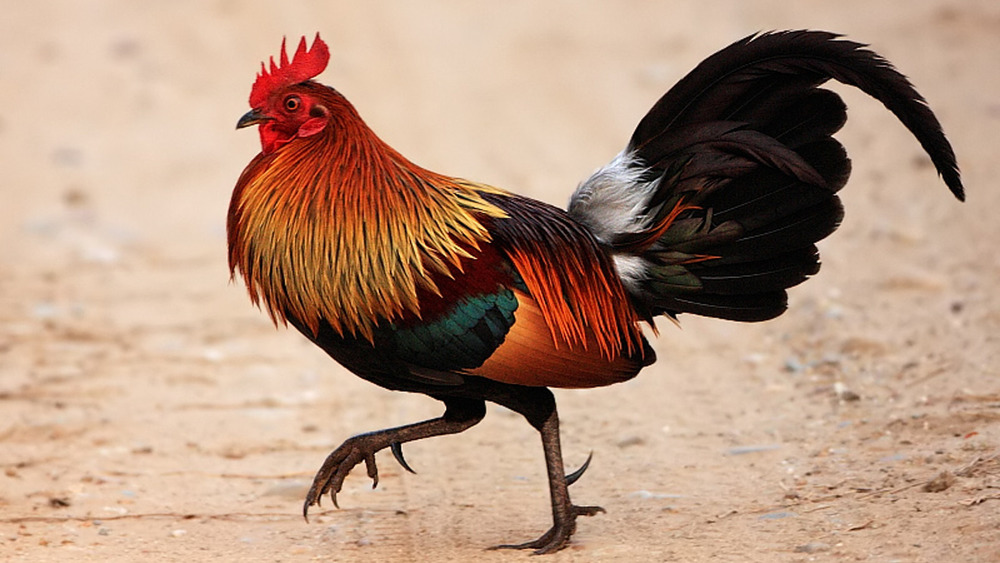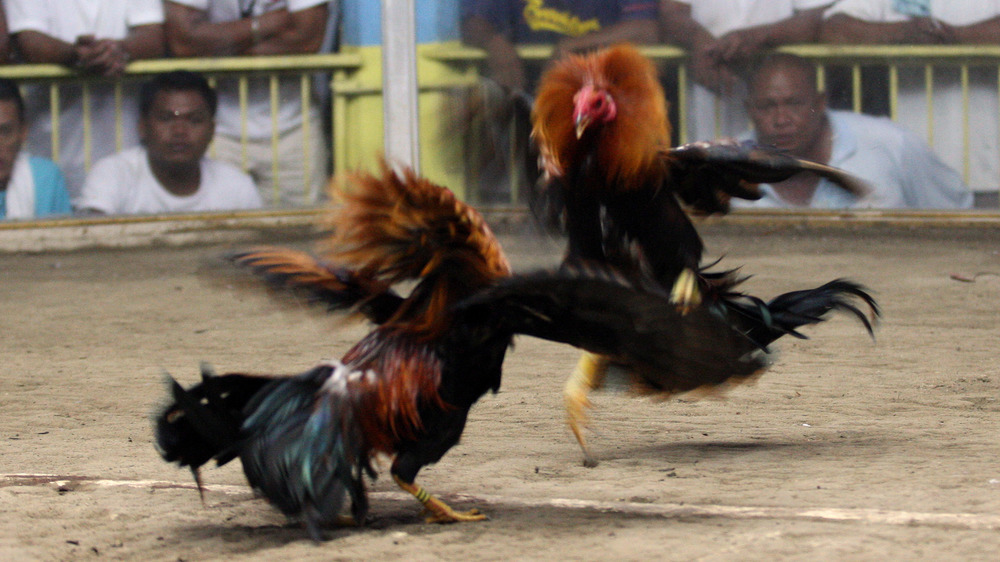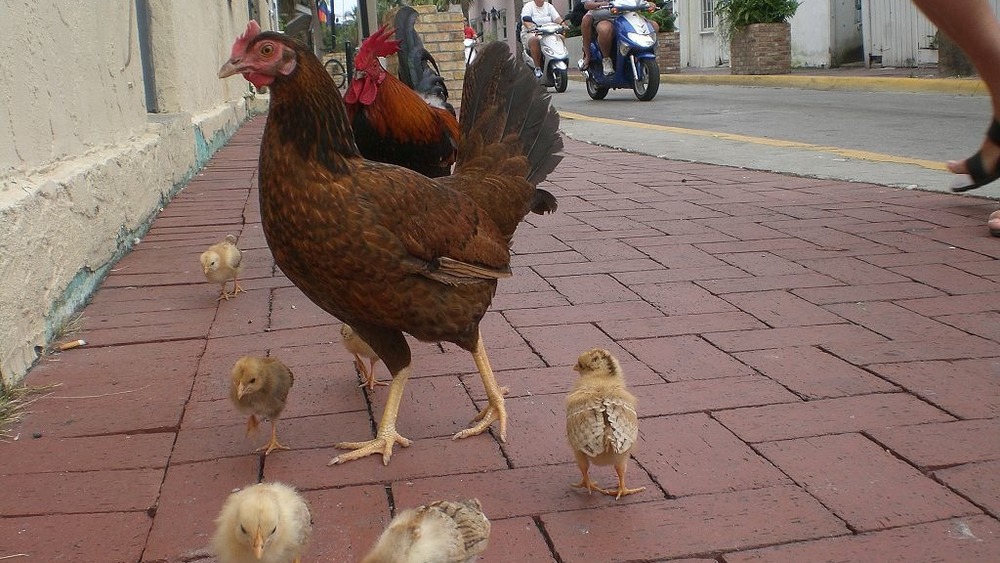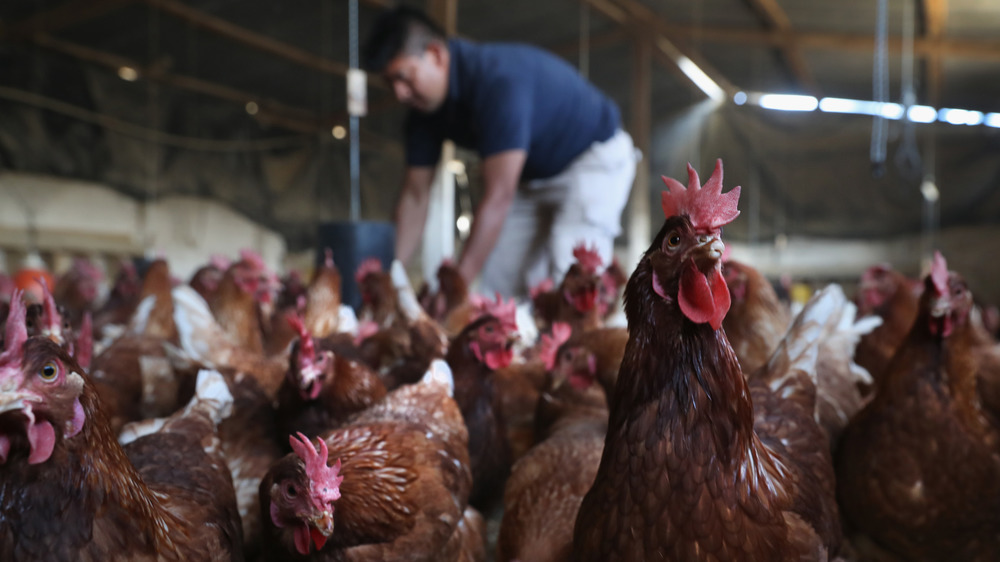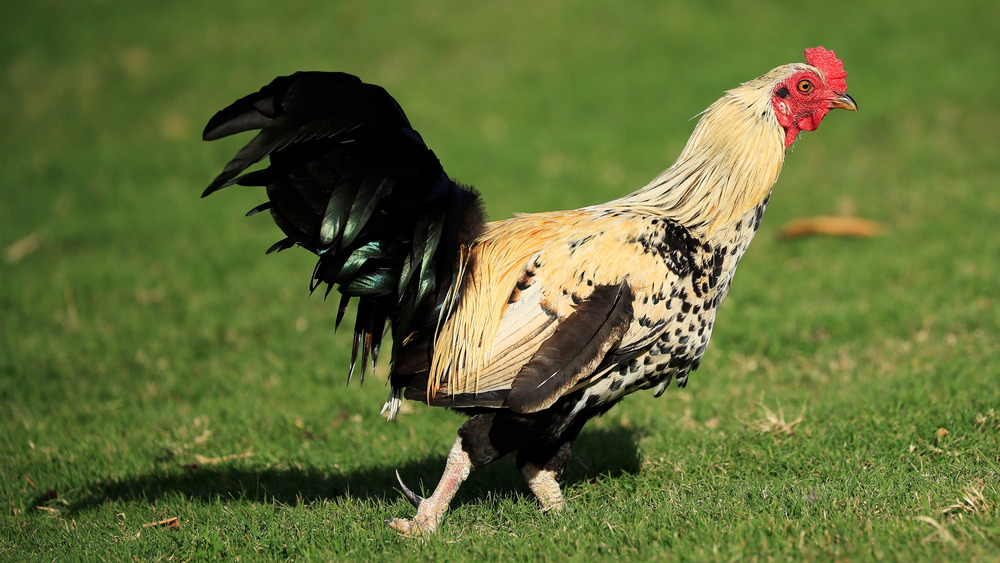The Reason Key West Made An Ordinance About Chickens
As Visit Florida tells us, Key West is the southernmost city in the continental United States and a huge tourism attraction for the State of Florida. Its rich history stretches back to colonial times, and according to Keys History it became part of the United States in 1822 when Admiral Perry literally sailed there and planted a United States flag in the ground. Sites like the house where Ernest Hemingway wrote several of his most famous novels and the beautiful, tropical weather combined with the relative ease of getting there (it's connected by road to mainland Florida) make it an ideal vacation spot.
Also: Chickens.
Visitors to Key West are often surprised by how many feral chickens are just roaming about — they're literally everywhere. Visitors are also charmed, especially when they come across a mama chicken leading a parade of chicks behind her. In fact, tourists are so charmed by the chickens of Key West that, as AP News reports, they spend a lot of time and money feeding them, even buying "huge" bags of bird feed for them. The chickens get fed so much they're quite fat and quite happy, and they're causing a lot of problems for the folks who actually live in Key West. That's also the reason Key West made an ordinance about chickens.
It all started with cockfights
Chickens have always been part of Key West life. According to the Florida Rambler, the birds were brought to Key West centuries ago, primarily for food and cockfighting, which was once a pretty popular sport back when people didn't have the NFL or video games to pass the time. According to Chicken and Chicks Info, the chickens brought over from Cuba and the Caribbean were primarily Red Jungle Fowl chickens.
When cockfighting was made illegal (according to Atlas Obscura, this wasn't until 1986 in the state of Florida), most of the chickens were simply abandoned. They quickly became feral and thrived in the wild, and their population grew pretty quickly. The city of Key West protects the chickens — you can't just grab one and make it into your Sunday dinner — but it did hire an official Chicken Catcher in 2004 in an attempt to reduce the population without killing any birds. The decision was incredibly unpopular, and the Chicken Catcher quit after just a year. He has not been replaced.
Residents can get a free chicken trap from the Key West Wildlife Center (KWWC) and bring the birds there. The KWWC then distributes the chickens to organic farms, where they thrive as natural pest control.
The chickens are superstars
The Key West Chickens are a big part of the city's tourism industry, and they're beloved by most of the local residents. In fact, as Keys Voices reports, when a Chicken Catcher was hired a few years ago to capture 2,000 birds and relocate them, locals followed him around and set every chicken he trapped free. Then they organized a four-day festival called Chickenfest. People dressed up like chickens, danced in the streets, and generally celebrated all things chicken in Key West. The Chicken Catcher quit shortly thereafter.
And as Key West Island News notes, even though the chickens can be annoying — crowing in the early hours and constantly pecking around — they are huge tourist attractions, and that generates income for the city. Residents are used to the sight of tourists staggering off cruise ships and photographing the chickens as if they'd never seen a feral chicken before — which, for many urban dwellers, is very likely true.
What changed the attitude of many local residents is where the chickens roost. As The New York Times notes, in 1998 Hurricane Georges destroyed the area on Key West where the chickens had traditionally lived, relatively peacefully with their human neighbors. The displaced chickens invaded other areas of the island, irritating the locals far more than in the past.
It's now illegal to feed the chickens
As the Miami Herald reports, all of this chicken-related drama has caused the city of Key West to pass a new ordinance that makes feeding the feral chickens illegal. Under the new rule, the first time you're caught feeding a chicken you'll be fined $250. After that, the fine goes up to $500.
The chicken population has exploded, and after their traditional roosting spots were destroyed by Hurricane Georges in 1998 the chickens quickly moved into the more populous areas of the city. As The New York Times reports, Key West has also experienced a period of intense gentrification, with a lot of wealthy people building million-dollar homes on the island. These wealthy new residents don't want wild chickens roaming their manicured gardens.
The chickens are also kind of gross. Because they're so fat and well-fed, they poop literally everywhere. They also get run over by cars quite often, leaving horrifying chicken corpses everywhere, and residents have reported aggressive chickens attacking their legs as they try to enter their homes. The Chicken Problem has been exacerbated by some residents who feed and care for the chickens, which led other residents to seek the assistance of law enforcement, only to discover that there's no ordinance against it. In fact, the only chicken-related law on the books forbade killing chickens. This prompted a movement promoting the new ordinance.
It's not just Key West
You might think that the phrase "feral chicken problem" doesn't crop up very often, and in most areas of the world you'd be right. You might also think that Key West's feral chicken problem is an isolated incident, but there you'd be wrong. As Atlas Obscura notes, exploding feral chicken populations are increasingly common throughout the tropics.
The short list of chicken-infested islands includes not just Key West, but also Bermuda and just about all of Hawaii's islands. Repeating Islands reports that Bermuda has more than 30,000 feral chickens and the government blames them for $100,000 worth of crop damage every year. That has prompted the Bermudan government to take a much harsher stance against the chickens, encouraging citizens to destroy eggs when they find them and allowing all government employees to shoot chickens on sight.
The common thread in all of these feral chicken stories is hurricanes. The New York Times points out that the feral chicken population in Kauai jumps after every hurricane. The storms damage areas where chickens live, and they invade other areas in search of food and shelter. There's a similar pattern in Bermuda and Key West, which means Key West may soon need more laws to control its chicken population, considering how often it gets hit by hurricanes.
